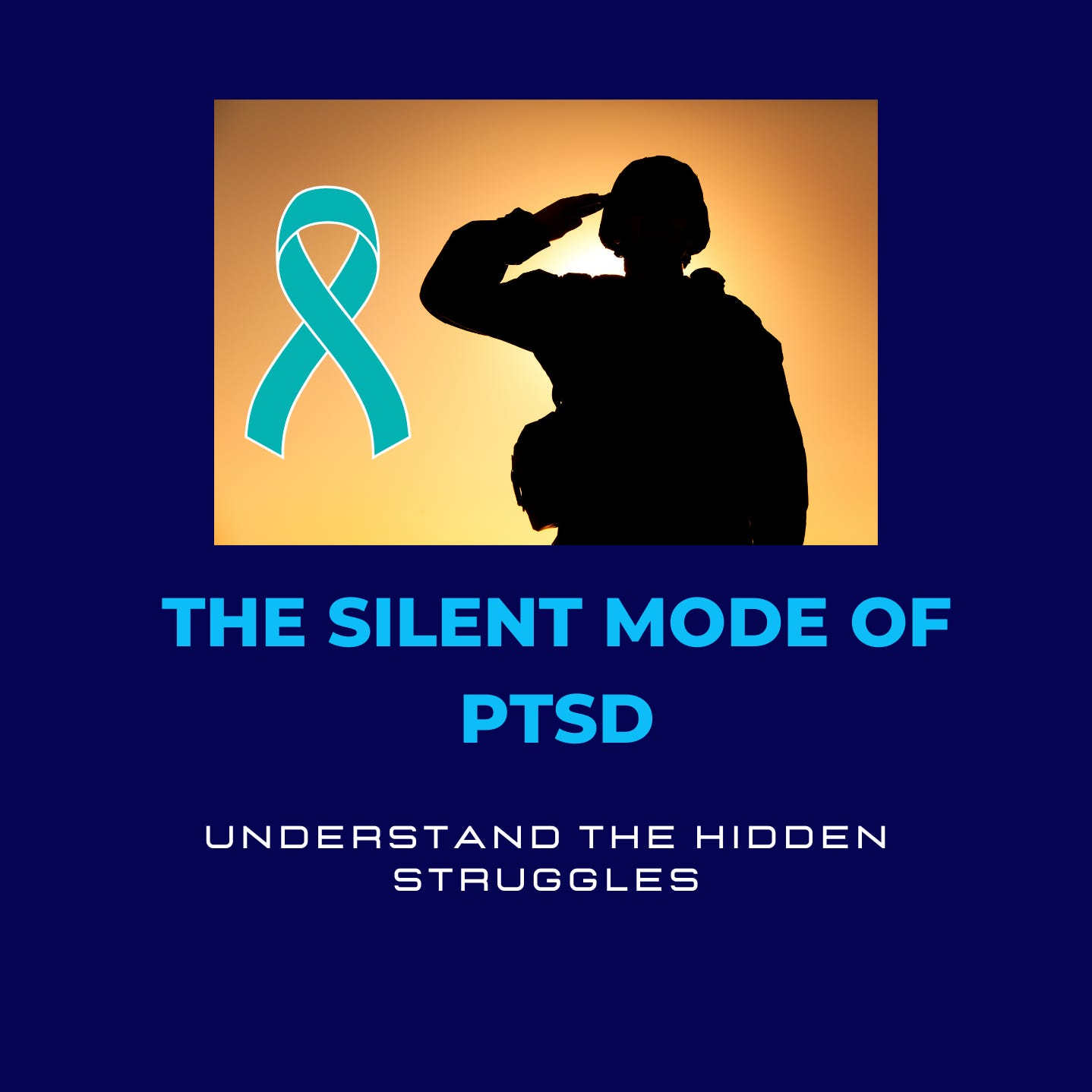The Silent Mode of PTSD
Post-Traumatic Stress Disorder (PTSD) is often perceived through dramatic manifestations—flashbacks, panic attacks, or sudden bursts of anger. Yet, there's a subtler, quieter aspect that remains hidden beneath the surface: the silent mode of PTSD. This silent mode is insidious, cloaking sufferers in isolation, emotional numbness, and quiet despair. Understanding it is crucial to supporting those who suffer silently.
The Veil of Silence
When PTSD sufferers shift into silent mode, their symptoms are internalized rather than expressed. Instead of visible emotional distress, they retreat inward, experiencing profound emotional numbness or detachment. Imagine going through daily life behind an invisible barrier, feeling disconnected from loved ones and unable to engage with moments that once brought joy. This emotional dissociation can lead sufferers to believe they're protecting themselves—and others—from their pain, yet it deepens their isolation.
Emotional Numbness: A Survival Mechanism Turned Prison
Initially, emotional numbness serves as a protective mechanism, helping individuals cope during intense traumatic experiences. However, when this protective state persists over the long term, it becomes damaging. Sufferers might describe feeling like spectators in their own lives, watching events unfold without genuine participation or emotional investment. Relationships deteriorate as partners, family members, and friends struggle to connect emotionally with the person who seems distant and unresponsive.
Silent Isolation: The Hidden Cost
Silent PTSD sufferers often withdraw socially, opting to avoid situations where emotions might surface. This avoidance can include skipping social gatherings, disengaging from previously enjoyed activities, or maintaining superficial interactions to conceal their emotional detachment. As social isolation deepens, sufferers may become trapped in a cycle of loneliness and self-criticism, mistakenly believing they are weak or undeserving of connection.
The Physical Toll of Silence
Though silent, PTSD still inflicts significant physical consequences. Chronic emotional suppression elevates stress hormone levels, impacting sleep patterns, appetite, and overall health. Sufferers may experience chronic fatigue, persistent headaches, digestive issues, or even autoimmune responses triggered by ongoing internal stress. The body keeps score, even if the mind remains silent.
Recognition and Intervention
Recognizing silent PTSD can be challenging, precisely because sufferers appear outwardly functional. Yet, subtle signs such as persistent emotional withdrawal, noticeable changes in social behaviors, or unexplained physical symptoms might indicate silent suffering. Family members and friends need awareness to approach those they suspect might be enduring this silent struggle gently.
Encouraging open communication, providing a non-judgmental space, and patiently supporting individuals as they articulate their experiences can make a profound difference. Sufferers must feel safe enough to break their silence, acknowledging their internal pain without fear of rejection or misunderstanding.
Pathways to Healing
Healing from silent PTSD involves carefully guided therapeutic interventions like Cognitive Behavioral Therapy (CBT), Eye Movement Desensitization and Reprocessing (EMDR), and somatic therapies designed to reconnect sufferers with their emotions and bodies. Mindfulness practices, such as meditation and guided breathing exercises, can gradually help sufferers reclaim emotional responsiveness and re-engage meaningfully with life.
Professional help is crucial, but personal networks also play an indispensable role. Simple acts of consistent support, such as patient listening, gentle encouragement, and affirmation, can empower individuals to break their silence and take steps toward recovery.
From Silence to Strength
The silent mode of PTSD is indeed a formidable barrier, yet it's not insurmountable. Understanding its quiet devastation empowers both sufferers and their loved ones to address it openly and compassionately. When silence is met with empathy and knowledge, it transforms from a hidden burden into a visible opportunity for healing, restoring authentic connection, emotional freedom, and renewed vitality. If you or someone you know is struggling with PTSD symptoms, remember—you don't have to face this journey alone. Reach out for support; help is available, and recovery is possible.
© 2025 www.soundthetrumpet.org







